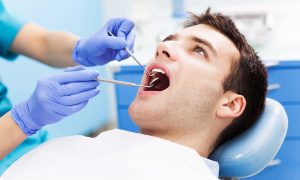
CoolSculpting has become a popular non-invasive procedure for reducing stubborn fat deposits. This innovative treatment, offered by Mediluxe CoolSculpting, uses a process called cryolipolysis to target and eliminate fat cells. Understanding the science behind CoolSculpting can help individuals make informed decisions about this procedure.
What is CoolSculpting?
CoolSculpting is a FDA-approved non-surgical fat reduction treatment that uses controlled cooling to eliminate fat cells. The procedure targets specific areas of the body, such as the abdomen, thighs, and flanks, where stubborn fat tends to accumulate. Unlike traditional liposuction, CoolSculpting does not involve surgery, incisions, or downtime.
The Process of Cryolipolysis
Targeting Fat Cells
During a CoolSculpting treatment, a specialized device is applied to the skin over the target area. This device delivers controlled cooling to the underlying fat cells, causing them to freeze and crystallize. The surrounding skin and tissue remain unharmed during this process.
Fat Cell Destruction
Once the fat cells are crystallized, they undergo apoptosis, or cell death. Over time, the body naturally processes these dead cells and eliminates them through the lymphatic system. This process gradually reduces the thickness of the fat layer, leading to a more sculpted appearance in the treated area.
Effectiveness and Results
Gradual Fat Reduction
The results of CoolSculpting are not immediate, as it takes time for the body to eliminate the destroyed fat cells. Most people begin to see noticeable results within a few weeks of treatment, with full results becoming apparent after a few months. Multiple treatment sessions may be needed to achieve the desired outcome.
Long-lasting Results
CoolSculpting offers long-lasting results, as the treated fat cells are permanently eliminated from the body. However, it is important to maintain a healthy lifestyle with proper diet and exercise to prevent the remaining fat cells from expanding.
Safety and Side Effects
Minimal Downtime
One of the key benefits of CoolSculpting is that it requires minimal downtime. Most people can resume their normal activities immediately after treatment, making it a convenient option for those with busy lifestyles.
Common Side Effects
Some common side effects of CoolSculpting include temporary redness, swelling, bruising, and numbness in the treated area. These side effects typically resolve on their own within a few days or weeks.
Is CoolSculpting Right for You?
CoolSculpting is not a weight loss solution for individuals who are obese. It is best suited for people who are close to their ideal weight but have stubborn fat deposits that are resistant to diet and exercise. A consultation with a qualified healthcare provider, such as Mediluxe CoolSculpting, can help determine if CoolSculpting is the right treatment option for you.



